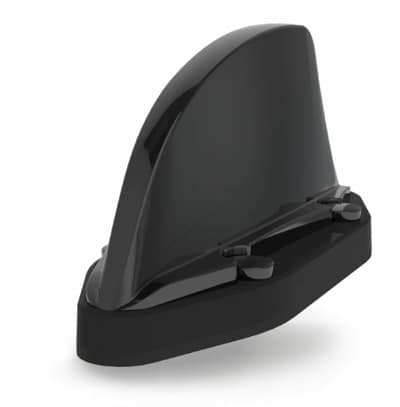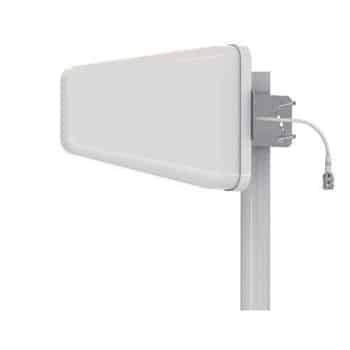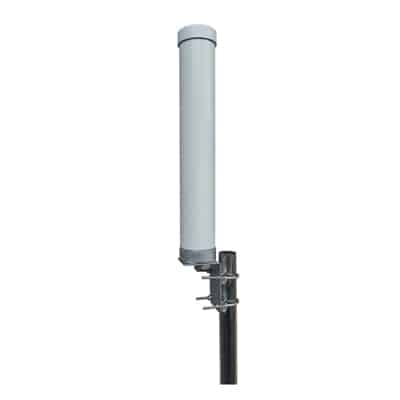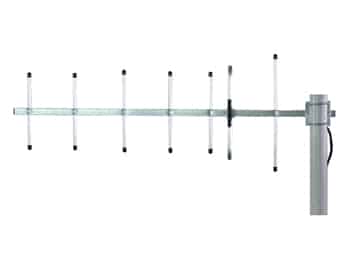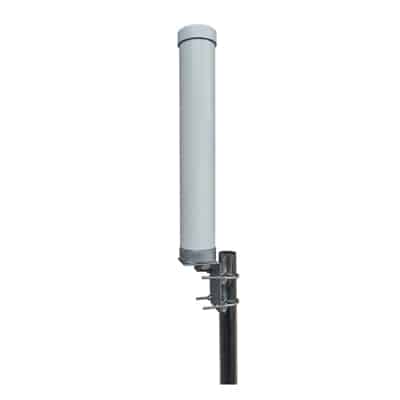
Вы когда-нибудь задумывались, как беспроводным системам communication, таким как беспроводные телефоны, удается поддерживать такую надежную и четкую связь? Ответ на этот вопрос дают антенны DECT. По сути, антенна DECT - это часть телефона, которая обеспечивает беспроводную связь между базовой станцией и трубкой, используя определенный частотный диапазон, используемый для звонков. Стандарт "Digital Enhanced Cordless Telecommunications" (DECT), который чаще всего используется только в беспроводных стационарных телефонах, предназначен для передачи и приема определенных радиосигналов.
Эта статья поможет вам разобраться в системах DECT. Здесь мы описали назначение технологии DECT, различные виды антенн DECT, их важные характеристики, реальное применение и отличие от других беспроводных технологий. К концу статьи вы будете иметь полное представление о важности антенн DECT в современной беспроводной со1TP15Туникации.
Оглавление
ToggleПонимание технологии DECT
Объяснение DECT
Технология DECT зародилась в Европе и является стандартом беспроводных телефонов, используемым во всем мире. Первоначальные стандарты DECT были выпущены в 1992 году, а сама технология DECT разрабатывается Форумом DECT, поддерживаемым его членами. Помимо беспроводных домашних телефонов, DECT также используется для беспроводного расширения рабочего места, что позволяет переводить клиентов на различные базовые станции, когда они перемещаются по объекту. Телефоны, купленные в одном регионе, не будут работать с телефонами DECT в другом, поскольку DECT работает в разных частотных диапазонах от 1,8 до 1,9 GHz в зависимости от страны.
Как работает DECT?
Система DECT состоит из двух компонентов, которые находятся в контакте друг с другом. Первый компонент - базовая станция, также известная как стационарная часть. Второй компонент - телефонная трубка, иногда называемая портативной частью.
В основном базовая станция служит связующим звеном между трубками и телефонными и интернет-соединениями. Она может представлять собой DSL-маршрутизатор с функцией DECT или базовую станцию DECT с автоответчиком или без него. Для создания сети можно подключить несколько базовых станций. Это часто используется в телефонной связи на обширных территориях. Здесь односотовые и многосотовые системы обеспечивают плавный переход. Телефонная трубка служит аналогом базовой станции. Трубка подключается к базовой станции и, как правило, является беспроводной. Однако в качестве альтернативы этот мобильный компонент может иметь форму телефона или гарнитуры.
При изучении передачи сигнала можно заметить, что базовая станция постоянно посылает "сигнал маяка". Находящаяся поблизости трубка может его принять. Сигнал дает телефону информацию, необходимую для подключения к базовой станции и передачи данных. Если базовая станция и трубка синхронизированы, вы можете использовать это беспроводное решение для совершения телефонного звонка. Канал маяка с самым сильным соединением будет заблокирован для других телефонов во время вызова. Средняя задержка при передаче данных от устройства к базовой станции составляет 10 мс. Это значительно меньше, чем типичная задержка, наблюдаемая во многих сетях Wi-Fi и Bluetooth, которая может меняться в зависимости от условий сети.
Роль антенн в системах DECT
В системах DECT антенны обеспечивают передачу и прием радиосигналов между беспроводными телефонами и базовой станцией. Зона покрытия, помехоустойчивость и уровень сигнала определяются этими антеннами.
Конструкция антенны DECT влияет на распространение сигнала, минимизируя мертвые зоны и гарантируя надежное соединение. На эффективность передачи данных и качество звонков могут влиять такие параметры, как размер, направление и расположение антенны.
Типы антенн DECT
Внутренние антенны
Встроенные в такие устройства, как беспроводные телефоны, внутренние антенны компактны и оптимизированы для связи малого радиуса действия communication. Базовые станции с внутренними антеннами (внешняя антенна не требуется), небольшими размерами, встроенной антенной, возможностью подключения к локальной сети и питанием через Ethernet (PoE) упрощают установку. В результате для поддержки телефонии не требуется прокладка дополнительных кабелей.
Внешние антенны
Внешняя антенна DECT расширяет зону действия базовой станции и базовой станции IP-DECT в местах, где установка базовой станции затруднена. Благодаря своей большой направленности она является идеальным инструментом для расширения зоны покрытия в труднодоступных местах. Ретранслятор также можно подключить к внешней антенне.
Фиксированные антенны
Устанавливаемые на устройства DECT, эти антенны обеспечивают стабильную производительность и используются в корпоративных системах связи common.
Выдвижные антенны
Выдвижные антенны можно регулировать для лучшего приема сигнала, что обеспечивает гибкость в использовании.
Всенаправленные антенны
Эти антенны передают сигналы во всех направлениях, обеспечивая широкое покрытие и улучшенную связь для нескольких пользователей.
Направленные антенны
Направленные антенны, предназначенные для фокусировки сигнала в определенном направлении, повышают уровень сигнала и снижают уровень помех.
Основные характеристики антенн DECT
Каналы:
Всего в DECT 120 дуплексных каналов. В результате выделения отдельных каналов 120 пользователей могут одновременно взаимодействовать без помех. В DECT используются такие методы, как множественный доступ с разделением по времени (TDMA), множественный доступ с разделением по частоте (FDMA) и дуплекс с разделением по времени (TDD). Доступны десять частотных и двадцать четыре временных слота. Нисходящая связь (от базовой станции к трубке) осуществляется в первые двенадцать временных слотов, а восходящая связь (от трубки к базовой станции) - в оставшиеся двенадцать временных слотов.
Частота:
В беспроводной системе существует два способа распределения частот между несколькими пользователями. Когда DECT не передает и не принимает сигнал, он позволяет портативным станциям прослушивать каналы с помощью TDMA. Это приводит к динамическому распределению каналов (DCA), которое позволяет системе быстро переключаться на другой канал для решения проблем, возникающих при вмешательстве в работу конечного пользователя или терминала. Благодаря TDMA одна радиостанция может использоваться для передачи и приема данных для множества пользователей.
Охват:
Для покрытия территории в DECT используются три спецификации
- Радиочастота.
- Чувствительность приемника.
- Мощность передачи.
Дальность действия и зона покрытия DECT уступают таковым у Глобальной системы мобильной со1TP15товой связи. Тем не менее, она находит широкое применение при организации связи внутри помещений. Благодаря DECT каждый трансивер может иметь до 12 голосовых соединений одновременно.
Диапазон:
Мы часто звоним на ходу. Телефон DECT в этом отношении явно ограничен. Кроме того, эти границы составляют 300 метров снаружи и 50 метров внутри. Препятствия, такие как сталь, бетон или деревья между базовой станцией и трубкой, могут повлиять на радиус действия. Если обычный диапазон DECT недостаточен для нужд пользователя, можно использовать ретранслятор DECT. Регистрируясь на базовой станции как трубка, мощный ретранслятор DECT, например Gigaset Repeater HX, удваивает радиус действия без помех и снижения качества передачи голоса.
Как мы уже говорили, DECT состоит из двух компонентов: стационарного и портативного. Базовая станция - это стационарный радиокомпонент. Мобильный телефон является портативным компонентом. Базовая станция отвечает за подключение мобильных телефонов к телефонным сетям. Функция безопасности хорошо развита, а переход осуществляется без проблем. Благодаря повышенной мобильности, настраиваемой полосе пропускания, хорошему качеству речи и высокой емкости аккумулятора пользователей становится все больше. Обычно радиус действия соты составляет от 25 до 100 метров. Плотность трафика составляет 100 000 эрлангов/км2, а скорость передачи данных - 32 кбит/с. Кроме того, несущая частота беспроводной связи находится в диапазоне от 1,88 до 1,9 GHz.
Применение в реальном мире
В базовом смысле DECT был создан для передачи голоса. Развитие VoIP (интернет-телефонии) и связанной с ней передачи данных сделало необходимым для DECT доступ к этим услугам.
Беспроводные телефоны, которые в основном популярны для использования в домах, на рабочих местах и предприятиях, разработаны с использованием технологии DECT.
Он используется в различных промышленных приложениях, таких как пульты дистанционного управления и радионяни.
Он используется в беспроводной локальной сети (WLL), которая предоставляет пользователям телекоммуникационных услуг интернет и телефон, а также в Глобальной системе мобильной связи (GSM).
Он используется в бизнес-телефонных системах, также известных как частные автоматизированные телефонные станции (PABX), которые представляют собой многолинейные телефонные сети, используемые на рабочих местах. Его используют центры обработки вызовов и другие коммерческие предприятия.
Телефонная сеть общего пользования (ТфОП), глобальная телефонная система, объединяющая различные телефонные сети общего пользования, включает в себя технологию DECT для беспроводной со1TP15Туникации.
Он используется в цифровых сетях с интегрированным обслуживанием, которые используют телефонные сети общего пользования (ТфОП) для передачи мультимедийных и аудиоданных.
Реальный пример 01: антенна BodyWave DECT
При разработке антенной линии BodyWave DECT были учтены все трудности, связанные с ношением беспроводных со1TP15Туникаций. Даже в самых сложных условиях гарантируется надежная работа линий связи благодаря повышенной эффективности излучения, улучшенной отстройке immunity и эксклюзивному распространению. По сравнению с современными готовыми антеннами общего назначения технология антенн BodyWave гораздо лучше подходит для носимых приложений. По сравнению с имеющимися в настоящее время чиповыми и печатными антеннами, эти антенны призваны улучшить покрытие в направлениях, которые блокируются телом человека, с увеличением бюджета связи на 10-20 дБ в этих направлениях.
Антенна 1.9 GHz DECT BodyWave Antenna включает в себя следующие характеристики.
- Возвратные потери стабильны
- Минимальное отклонение импеданса при различном расстоянии между антенной и тканью
- Предсказуемые характеристики излучения на теле
- Простота интеграции
Пример из реального мира 02: 1001013 - Антенна DECT NR+ SMD
Эти антенны отвечают главным требованиям разработчиков устройств, требующих повышения функциональности и производительности при меньших размерах и толщине. Эти передовые антенны предлагают неоспоримые преимущества для медиаплееров, карманных устройств и других мобильных устройств, поддерживающих 2.4 GHz. С этой антенной можно работать как в наземных, так и в наземных (над металлом) условиях. Здесь реализована технология DECT NR+.
Преимущества антенн DECT
- Надежность - DECT предназначен для голосовой со1TP15общения. Это гарантирует, что голос не будет мешать другим процедурам communication.
- Изолированная частота - DECT работает на отдельной частоте благодаря собственному спектру, что снижает конкуренцию за пропускную способность между компьютерами и беспроводными устройствами.
- Меньшее энергопотребление - благодаря своей конструкции телефон потребляет меньше энергии, чем wi-fi, что позволяет пользователю общаться в течение длительного времени.
- Экономичность - поскольку эти услуги обходятся дешевле, чем другие, все больше людей - от предпринимателей до жителей - становятся их абонентами.
- Меньше подвержены воздействию высокочастотных волн - По сравнению с пользователями мобильной связи, пользователи телефонов DECT меньше подвержены воздействию высокочастотных волн. Это объясняется тем, что DECT обладает характеристиками ближнего радиуса действия.
- Стабильность и безопасность - DECT является очень безопасной технологией, которая используется для бесперебойной связи. Поскольку уникальная базовая станция доступна только для трубок, DECT отличается стабильностью.
- Высокое качество - Бесперебойный роуминг между базовыми станциями гарантируется превосходным качеством DECT.
Сравнение с другими беспроводными технологиями
Чем антенны DECT отличаются от тех, что используются в Wi-Fi, Bluetooth и т. д.
Для доступа в Интернет, телефонных звонков и передачи любых данных достаточно Wi-Fi. С появлением DECT он столкнулся с сильной конкуренцией. В этом смысле принцип беспроводной передачи данных одинаков. Однако между конкретными областями применения этих двух технологий есть существенные различия.
И вот по какой причине: Цель Wi-Fi - передача данных. Во время этой процедуры передаются небольшие пакеты данных, что часто приводит к сбоям. Однако это особенно важно, когда речь идет о голосовой связи. Мы предпочитаем понимать, что говорит собеседник, а не слушать плохое качество голоса во время телефонного разговора. DECT, с другой стороны, отдает приоритет голосовой связи, потому что она была создана для этого с самого начала. Для достижения наилучшего качества голоса все ресурсы могут быть задействованы на изолированных частотах. Чтобы использовать Wi-Fi в системе DECT, был создан профиль CAT-iq для дополнительной передачи данных. Дальность действия DECT обеспечивает дополнительное преимущество перед Wi-Fi. Однако "голос по Wi-Fi" обычно ограничен, и только определенные точки доступа позволяют переключаться между ними без сбоев во время телефонного разговора.
DECT работает на выделенных частотах, что позволяет избежать перегруженности, характерной для Wi-Fi и Bluetooth. В отличие от ближней связи Bluetooth, DECT обеспечивает увеличенный радиус действия и повышенную безопасность.
Преимущества: Безопасная связь communication, увеличенный радиус действия и минимум помех.
Недостатки: Ограничена передачей голоса, не идеальна для высокоскоростных приложений передачи данных.
Заключение
Проще говоря, мы рассказали о технологии DECT, ее роли в беспроводной связи и основных характеристиках антенн DECT. Здесь также упоминаются различные типы антенн DECT, их ключевые особенности и преимущества в различных приложениях. Кроме того, мы сравнили антенны DECT с антеннами, используемыми в других беспроводных технологиях, таких как Wi-Fi и Bluetooth, подчеркнув их уникальные преимущества.
Понимание антенн DECT поможет каждому понять роль антенн DECT в обеспечении надежной и свободной от помех communication. Независимо от того, создаете ли вы систему DECT для дома или бизнеса, выбор правильной антенны может значительно повысить производительность, дальность действия и безопасность. По мере развития технологий антенны DECT будут продолжать совершенствоваться, поддерживая растущий спрос на надежную и безопасную беспроводную связь communication.

